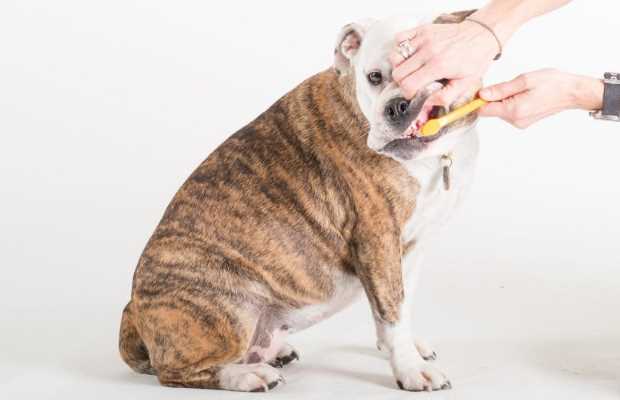
Growing up we've been told over and over how important it is to brush our teeth twice a day. Turns out, it's still a surprise to many dog owners that dog teeth cleaning is also a vital part your dog's daily grooming needs and overall health. With that in mind, let's discuss how to clean dogs' teeth, how often should you do this and why it's important.
Thankfully, there are many at-home options to make sure that your pet has clean teeth and gums. More dog dental care products are also popping, allowing dog owners who don't have time to do any dog teeth cleaning for an easier solution. Here are some of the recent news we've covered about products which you can use for dog teeth cleaning:
- Greenies Improve Dog’s Oral Health
- Dog Supplement Helps Prevent Periodontal Disease in Dogs
- New Dog Food Company Releases Biscuit That Cleans Teeth and Reduces Bad Breath
- Tropiclean Offers Gel That Cleans Canine Teeth Without Brushing
- These Naturally Shed Antlers Are a Delicious Treat for Your Dog
When you're trying to learn how to clean dogs' teeth, you should remember that your main goal here is to minimize plaque and tartar build up in your pooch's mouth. In addition, you'll also have a Fido with fresher breath and whiter teeth (it just shouldn't be your first priority).
Is dog teeth cleaning a recent trend in dog grooming?
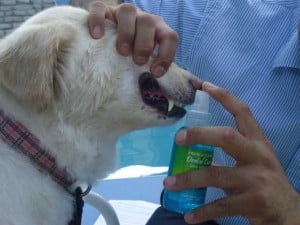
Many dog owners remain skeptical about brushing their dogs' teeth. Most of them will argue that maintenance of pets' teeth isn't as important as some experts are making it out to be.
Their logic is based on the fact that just a decade ago nobody even knew what dog teeth cleaning was, and all the pets were happy and healthy. However, that is not true.
attentive and proper dog dental care can prolong your pet's lifespan.
Pet dental therapy has progressed a lot in the last 20 years, and have improved our dogs' teeth and gum health, as well as their overall well-being by a large margin. Dr J.R. Dodd, a professor from the Texas A&M College of Veterinary Medicine & Biomedical Sciences, weighs in:
“As goes the mouth, so goes the health. Taking care of your pet's mouth and keeping it nice and healthy should help the animal live longer,” says Dodd. “It used to be that most of our pets died at younger ages, so periodontal disease did not have a chance to impact their health and cause damage to their kidneys, livers or other vital organs. Veterinary medicine has advanced such that we are now better able to treat these diseases and our animals are living longer, healthier lives.“
So yes, it's important for dog owners to know how to clean dogs' teeth and maintain a healthy oral care throughout canine's whole life. There's never a good time to stop brushing your Fido's teeth, whether they are a puppy or a senior dog.
Dog Teeth Cleaning 101: How to Clean Dogs' Teeth
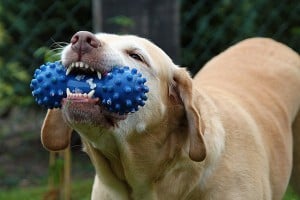 Actually brushing your dog's teeth is the easiest way to eliminate plaque buildup. Most veterinarians recommend brushing your dog's teeth on a daily basis, and many of them confirm that once a day is plenty. If that seems too hard to manage, then three to four times a week will be your next best option.
Actually brushing your dog's teeth is the easiest way to eliminate plaque buildup. Most veterinarians recommend brushing your dog's teeth on a daily basis, and many of them confirm that once a day is plenty. If that seems too hard to manage, then three to four times a week will be your next best option.
Surprisingly, a lot of dogs do very well with having their teeth brushed, and do not mind it as much as you'd expect.
When you're beginning to learn how to clean dogs' teeth, be careful about the dog dental products you choose and the brushing techniques you use; sores are not uncommon, because you don't feel your dog's gums. In terms of dog products, there are a variety of dog toothbrushes and dog toothpastes that are very “friendly.” Just make sure to only use toothpastes for dogs, as human toothpastes contain abrasives that are unsafe for your Fido.
Canine toothbrushes will be smaller in size than a toothbrush for people and the bristles are normally very soft, at a 45 degree angle. You can also find pet toothbrushes that fit on your finger and give your dog's gums a nice massage. If you so choose, even a piece of gauze wrapped around your finger is better than nothing.
Dog dental chews and a special diet for dogs can help a lot in keeping plaque at bay. Try to look for dog food that contains anti-tartar ingredients. Rawhide and some dog chew treats contain anti-tartar ingredients as well. If chewed daily, it can help with keeping plaque from building up. Chew dog toys should have a bump surface and large enough that they can’t choke on the toy.
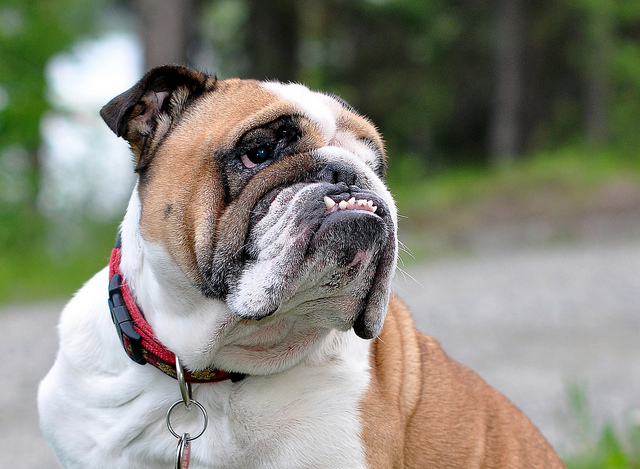
How to clean dogs' teeth gradually
Okay, so now that you have all the tools needed to take care of your puppy’s teeth, you are ready to get started. It may take a little while before your dog is completely comfortable with the idea of brushing. This is the whole process in a nutshell:
- Examine your dog's mouth for any signs of health problems (see below)
- Get your dog used to the feeling of your finger in his mouth as explained below
- Introduce the toothbrush, and have your dog get used to that as well
- Now get a little toothpaste onto the toothbrush, and gently spread it around
- Finally, get more toothpaste and start brushing your dog's teeth
The above process can take from a week to several weeks. There's no need to attempt to accomplish all of this in one day. Take your time with every step and consider the fact that your dog doesn't understand what you're doing, nor does he appreciate the feeling of something in his mouth. Take it slow. Now let's get to the process of how to clean dogs' teeth itself.
First, to get your pooch comfortable with you handling his teeth, start by rubbing some tasty dog treat along the front teeth with your finger. Gently rub the teeth and gums, getting your pet used to you handling him in that way. As he begins to feel more secure with what you are doing, add more of the same pet treat and start moving to other parts of the mouth and gums.
It’s important for the dog to get used to having something in his mouth and someone handling his muzzle.
The best time of the day for dog teeth cleaning when it's quiet and there's as few distractions around as possible. Normally, most veterinarians recommend the “before bed” brushing for your dog after he's already had his dinner.
Pull out your dog teeth brushing gear and let your pooch examine the tools. Have him smell the toothpaste and toothbrush. Gently open your Fido's mouth and move his lips apart. Carefully rub the toothbrush against his front exposed teeth. He will probably be a little surprised by the feel of the toothbrush in the mouth. As he gets comfortable, you can gradually move your way farther back. Make sure you are brushing along the gum line, and move in a circular motion. Work one side of the mouth and then switch to the other.
Do not rush into the process, and take it step by step (or tooth by tooth), daily.
Most tartar build up is on the dog's teeth that rub along the cheek. If your pet resists to you brushing the inside of his teeth, it’s not as important as plaque buildup is not as common in those areas. Each time you brush, gradually increase the amount of teeth you take care of, applying toothpaste as needed. Even if the experience does not go well, still give your dog a treat so he does not associate anything negative with the process of teeth brushing.
Potential dog dental health issues you may discover
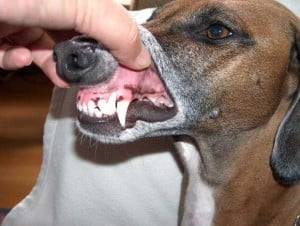 It’s always a good idea to familiarize yourself with any possible mouth and dental health problems your dog may come across. Here are a few examples of the most common cases in dogs to watch out for:
It’s always a good idea to familiarize yourself with any possible mouth and dental health problems your dog may come across. Here are a few examples of the most common cases in dogs to watch out for:
- Periodontal disease is a painful infection between the tooth and the gum that can result in tooth loss and spread infection to the rest of the body. Signs are loose teeth, bad breath, tooth pain, sneezing and nasal discharge. Read more about periodontal disease in dogs.
- Gingivitis is an inflammation of the gums caused mainly by accumulation of plaque, tartar and disease-producing bacteria above and below the gum line. Signs include bleeding, red, swollen gums and bad breath. It is reversible with regular teeth cleanings. Read more about gingivitis in dogs.
- Halitosis – or bad breath – can be the first sign of a dog's mouth problem and is caused by bacteria growing from food particles caught between the teeth or by gum infection. Regular tooth-brushings are a great solution. Read more about halitosis in dogs.
- Swollen gums develop when tartar builds up and food gets stuck between the teeth. Regularly brushing your dog’s teeth at home and getting annual cleanings at the vet can prevent tartar and gingivitis. Read more about swollen gums in dogs.
- Proliferating gum disease occurs when the gum grows over the teeth and must be treated to avoid gum infection. An inherited condition common to dog breeds like Boxers and Bull Terriers, it can be treated with antibiotics. Read more about proliferating gum disease in dogs.
- Mouth tumors appear as lumps in the canine's gums. Some are malignant and must be surgically removed. Read more about mouth tumors in dogs.
- Salivary cysts look like large, fluid-filled blisters under the dog's tongue, but can also develop near the corners of his jaw. They require drainage, and the damaged saliva gland must be removed. Read more about salivary cysts in dogs.
- Canine distemper teeth can occur if a dog had distemper as a puppy. Adult teeth can appear looking eroded and can often decay. As damage is permanent, decayed teeth should be removed by a vet. Read more about canine distemper teeth in dogs.
If you notice any changes in your dog's mouth or breath after a few sessions of brushing, then you should go see a dental veterinarian to rule out any mouth diseases. Do this at least once to confirm that there's nothing going on inside your dog's mouth. Finding out any dental health issues early on can save a lot of trouble, time and money.
Vets are divided on the issue of dog teeth brushing
Some veterinarians seem to be against dog dental cleaning at home. They argue that you cannot possibly access all the areas of the mouth to do a thorough cleaning of your dog's teeth and thereby completely prevent all the potential canine dental health issues.
“You cannot do a good job cleaning the teeth without anesthesia. You can’t get way in the back or at the inside of teeth because their tongues get in the way and you are not checking for pockets or broken teeth. An animal won’t show signs of oral pain even if it’s significant, and problems will progress if they go untreated. These people are preying on fear of anesthesia when the risks are actually very low,” said Dr. Mary Buelow to the NYPost.
To an extent, you can see her point. However, we must also remember that vet clinics and other similar canine teeth cleaning services – even though they most likely mean well for our dogs – have their own agenda.
Brushing your dog's teeth on a daily basis is a challenge for most dog owners.
Until we get into this habit and consider the procedure just as important as brushing our own teeth, it will remain so. Even veterinarians admit that they don't always brush their pets' teeth.
Disclosure: We may earn affiliate commissions at no cost to you from the links on this page. This did not affect our assessment of products. Read more here and find full disclosure here.












